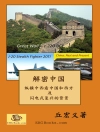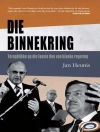Using a combination of statistical analysis of census material and social history, this book describes the ageing of Ireland’s population from the start of the Union up to the introduction of the old age pension in 1908. It examines the changing demography of the country following the Famine and the impact this had on household and family structure. It explores the growing problem of late life poverty and the residualisation of the aged sick and poor in the workhouse. Despite slow improvements in many areas of life for the young and the working classes, the book argues that for the aged the union was a period of growing immiseration, brought surprisingly to an end by the unheralded introduction of the old age pension.
Inhoudsopgave
List of figures and tables-. Acknowledgements-. Preface-. Chapter 1 Ireland at the time of the Union-. Chapter 2 Ireland’s changing demography-. Chapter 3 Change in family and household structure-. Chapter 4 Poverty and old age-. Chapter 5 Growing older, growing sicker?-. Chapter 6 Conclusions-. Appendices-. Bibliography-.
Over de auteur
Chris Gilleard is a visiting research fellow in the Division of Psychiatry at University College London, UK, and senior visiting research fellow at the University of Bath, UK. Author and co-author with Paul Higgs of a number of books addressing ageing and old age -including
Cultures of Ageing (2000);
Ageing, Corporeality and Embodiment (2013) and
Rethinking Old Age (2015)- his interests in later life span a wide range of disciplines from bio medicine to the humanities.












